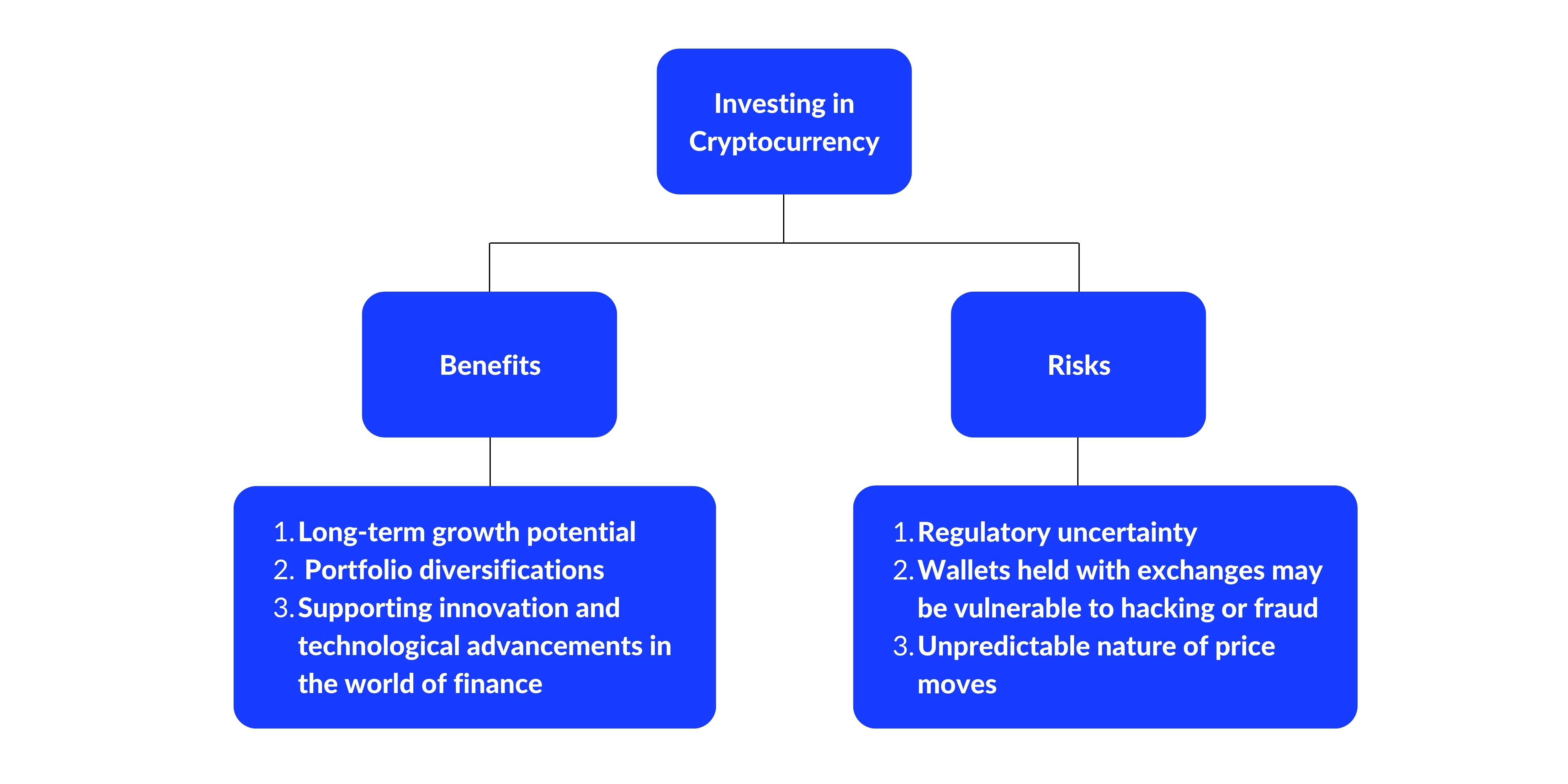Order Cryptocurrencies Currently: Rapid, Secure, and Easy Tips for every single Capitalist
Order Cryptocurrencies Currently: Rapid, Secure, and Easy Tips for every single Capitalist
Blog Article
The Future of Cryptocurrencies: Trends to See in the Upcoming Years
The emergence of Central Bank Digital Currencies (CBDCs) stands to redefine the assimilation of digital properties within typical monetary systems, while raised governing examination might shape the functional landscape for cryptocurrencies. Additionally, the development of decentralized finance (DeFi) and the expanding significance of non-fungible symbols (NFTs) assure to modify assumptions of ownership and appraisal in an electronic economic climate.
Surge of Central Financial Institution Digital Currencies
The emergence of Central Bank Digital Currencies (CBDCs) stands for a substantial change in the financial landscape as federal governments check out digital choices to traditional fiat cash. These state-backed electronic money intend to enhance the performance of payment systems, advertise economic inclusion, and offer a safe alternative to private cryptocurrencies. Unlike decentralized digital money, CBDCs run under the auspices of main financial institutions, making sure regulative oversight and security.
Numerous nations are proactively piloting or researching CBDCs, with notable instances including China's digital yuan and the European Central Bank's electronic euro initiative. These initiatives highlight a growing acknowledgment of the potential advantages of digital money, such as faster transaction rates and reduced expenses connected with cross-border repayments. CBDCs can offer as a device to combat illegal activities by giving higher transparency in transactions.
As the fostering of CBDCs proceeds, they may reshape customer habits and impact worldwide monetary characteristics. However, the change to an electronic currency framework offers challenges, including technological framework, cybersecurity worries, and public trust fund. The increase of CBDCs symbolizes a turning point that could redefine the role of money in a progressively electronic economy, warranting close observation by industry stakeholders and policymakers alike.
Enhanced Regulative Analysis

Countries worldwide are taking different strategies, from straight-out bans to regulative sandboxes that allow advancement while ensuring compliance. The European Union, for example, is relocating in the direction of detailed regulation with the marketplaces in copyright-Assets Law (MiCA), focused on developing a unified strategy throughout member states. In the United States, firms like the SEC and CFTC are significantly energetic in providing guidelines and enforcement activities.
This regulatory environment is likely to have substantial effects for market participants. Companies running in the copyright room might face more stringent compliance demands, which could result in raised operational costs. Clear regulations could also foster higher institutional investment, as companies look for to navigate an extra specified legal landscape. Ultimately, the balance between advancement and guideline will form the future of cryptocurrencies.
Evolution of DeFi Operatings Systems
Decentralized Finance (DeFi) platforms have actually undertaken significant change since their beginning, improving the traditional financial landscape - order cryptocurrencies. Initially, these systems mostly focused on simple features such as financing and borrowing, assisted in by wise agreements on blockchain networks. The evolution of DeFi has broadened to include a broad array of financial services, including by-products trading, return farming, and automated market-making.
One of the most significant advancements is the introduction of Layer 2 solutions, which boost scalability and lower purchase expenses, making DeFi more accessible to a broader audience. Additionally, cross-chain interoperability has ended up being a vital emphasis, enabling individuals to transfer assets seamlessly across various blockchain networks. This development promotes greater liquidity and user engagement.
Furthermore, the assimilation of advanced governance versions has actually equipped neighborhoods to participate in decision-making procedures, advertising sustainability and advancement within the community. As DeFi proceeds to develop, we can expect further enhancements in customer experience via boosted user interfaces and protection steps, resolving issues that have actually previously impeded mainstream fostering. On the whole, the trajectory of DeFi platforms points towards a more comprehensive and effective economic future, supplying options to conventional financial systems.
Assimilation of NFTs in Finance
Among the quick advancement of the economic landscape, the integration of Non-Fungible Tokens (NFTs) has actually emerged as a transformative pressure. Traditionally linked with digital art and antiques, NFTs are currently finding applications in various monetary industries, introducing innovative means to represent ownership and worth.
One considerable area of integration remains in genuine estate, where NFTs can streamline property transactions. By tokenizing actual estate possessions, buyers can appreciate fractional possession, decreasing entry obstacles and increasing liquidity. order cryptocurrencies. Furthermore, NFTs can make sure clear and immutable records of ownership, improving trust fund in actual estate ventures
On the planet of money, NFTs are additionally being used for decentralized money (DeFi) applications, making it possible for collateralization of properties. By utilizing NFTs as collateral, debtors can access loans while preserving ownership of their digital possessions. This performance other enhances the accessibility of economic solutions and promotes a much more inclusive monetary environment.
Additionally, the assimilation of NFTs into typical finance might transform the means intellectual residential property legal rights are managed, providing developers with brand-new income streams with clever agreements. Generally, the assimilation of NFTs in money indicates a change in the direction of more ingenious, reliable, and transparent economic solutions, leading the means for future advancements.
Improvements in Blockchain Technology

One significant fad is the appearance of Layer 2 options, created to boost scalability and purchase rates, thus dealing with the restrictions of key blockchain networks. These remedies make it possible for much faster processing of purchases, lowering fees and enhancing effectiveness, which is necessary for mass fostering.
Moreover, interoperability in between various blockchain networks is getting traction. This growth allows seamless information exchange and property transfers across diverse systems, promoting an extra connected and official website reliable environment. Procedures that help with cross-chain interaction are vital for promoting collaboration amongst decentralized applications (copyright) and improving user experiences.
Furthermore, innovations in agreement mechanisms, such as proof-of-stake and entrusted proof-of-stake, are contributing to more energy-efficient and safe blockchain procedures. These developments not just address environmental worries yet likewise enhance network resilience.
As blockchain technology proceeds to develop, its assimilation right into numerous industries, including finance, supply chain, and health care, will certainly redefine standard systems, leading the means for a decentralized future.
Final Thought
In final thought, the future of cryptocurrencies is characterized by transformative patterns that will certainly shape the financial landscape. The emergence of Reserve bank Digital Currencies will boost visit site the integration of electronic possessions right into standard economic systems. Concurrently, regulatory frameworks will advance, promoting institutional investment while making certain customer protection. Furthermore, the continual innovation of decentralized money systems and blockchain technology, alongside the integration of non-fungible symbols, will certainly redefine possession and financial deals, fostering increased adoption and innovation within the market.
Report this page